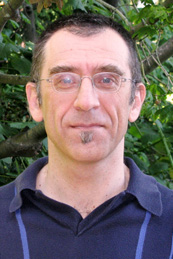 The School’s annual Colloquium Series continues next Wednesday (14 November) with a talk from our very own Dr. Valter Ciocca, Professor and former Director at the School of Audiology and Speech Sciences.
The School’s annual Colloquium Series continues next Wednesday (14 November) with a talk from our very own Dr. Valter Ciocca, Professor and former Director at the School of Audiology and Speech Sciences.
WHEN: Wednesday 14 November, 12:35-13:20
WHERE: Friedman Room 355
TITLE: Listening in noisy environments with cochlear implants: A Bayesian analysis of masking and auditory continuity data
BIO: Valter Ciocca completed his research training in experimental psychology with a focus on auditory and speech perception. His research mentors include Giovanni B. Vicario (University of Padua), Albert S. Bregman (McGill), and Chris J. Darwin (University of Sussex). Between 1992 and 2006, he was a faculty member in the Division of Speech and Hearing Sciences at the University of Hong Kong. Since 2007, Valter Ciocca has been a Professor in the School of Audiology and Speech Sciences at the University of British Columbia, Canada; he was the School’s Director between January 2007 and July 2017. Throughout his career, he has published over 50 peer-reviewed articles and book chapters, as well as other non-refereed manuscripts. His research interests include the perception and production of Cantonese lexical tones, the perceptual processing and the acoustic analysis of speech produced by speakers with and without communication disorders, and auditory scene analysis. Throughout his academic career, he has also maintained an active interest in the development and the implementation of effective approaches for promoting student learning in higher education. His service activities have included being a member (2007-2017) and Chair (2010-2014) of the Canadian Council of University Programs in Communication Sciences and Disorders (CCUP-CSD), and being Chair of the Secretariat of the Council for Accreditation of Canadian University Programs in Audiology and Speech-Language Pathology (2011-2015).
ABSTRACT: The external world experienced through hearing is full of auditory events (that is, perceived sounds) that often overlap in time. Sometimes, one or more of these sounds are higher in level than co-occurring lower-level sounds, and therefore partial or total masking of the lower-level sounds may occur. In spite of the presence of maskers in noisy environments, listeners can often recognize lower-level sounds (for example, a conversation or the sound of a musical instrument) in the presence of noise.
Sometimes only portions of sounds of interest are masked by louder sounds. Imagine, for example, that a gust of wind causes a door to shut violently while a person is talking, and that the noise of the slamming door masked (that is, “covered up”) a portion of a spoken word. In this situation, one would not hear the conversation as being interrupted by the slamming door. Instead, the conversation would typically be heard as continuing “underneath” the sound of the slamming door. This phenomenon, known as “auditory continuity” or “phonemic restoration”, is analogous to the perception of visual objects as complete (whole) even though they are partially covered by another object (also known as “picket fence effect” in visual perception).
The presentation will focus on sound recognition by people who have greatly reduced or missing auditory input and who hear sounds through the direct electrical stimulation of the auditory nerve provided by a cochlear implant. Although cochlear implants can be very effective for recognizing speech in quiet environments, the information they are able to transmit to the auditory nerve is much more reduced than the information provided by a normal cochlea. For this reason, cochlear implant users commonly find it difficult to follow conversations in noisy environments. This presentation will focus on the results of experiments on the perception of masking and of auditory continuity by users of cochlear implants. Bayesian data analysis procedures will be introduced and will be applied to the analysis of the data from these experiments. The evidence from this study shows that listeners with cochlear implants experience larger amounts of masking than an otherwise comparable group of listeners with normal hearing. A discussion about the role of masking in the poor recognition of speech in noisy environments by listeners with cochlear implants will conclude the presentation.
We look forward to seeing you there!
UPDATE: For anyone who missed Valter’s talk, you can now watch it online (note talk starts at 5:04)